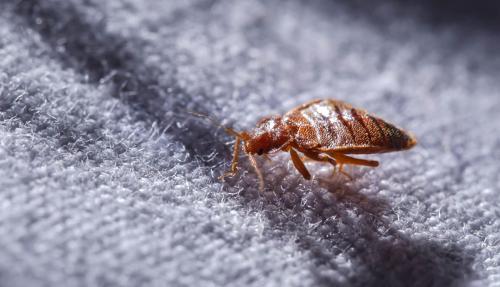Where Do Bed Bugs Come From?

Bed bugs are pesky insects that feed on the blood of humans and animals, causing itchy bites and irritation.
While they do not transmit diseases, they are still considered a public health pest due to the discomfort they bring. In this article, we will explore the origins of bed bugs and how they make their way into our homes. Additionally, we will provide valuable tips for preventing and treating bed bug infestations.
First, let's delve into what bed bugs are. These small, flat, reddish-brown insects have an oval shape and measure about the size of an apple seed. With six legs, they typically hide in cracks and crevices around beds, furniture, and areas where people sleep or spend time. Feeding primarily at night, they leave behind itchy, red bites that can be mistaken for other insect bites or rashes.
So, where do bed bugs come from? Contrary to popular belief, bed bugs are not a result of poor hygiene or dirty living conditions. They often enter homes and hotels through luggage, clothing, or personal items that have encountered infested areas.
Moreover, used furniture, mattresses, shared laundry facilities, and public transportation serve as pathways for these hitchhiking pests. Their ability to move quickly and easily from one location to another makes containing and controlling them quite challenging.
Let's explore some common places where bed bugs tend to hide.
Beds and bedding are the primary hotspots, given the carbon dioxide and warmth emitted by sleeping bodies. They can hide in the seams, folds, and crevices of mattresses, box springs, bed frames, headboards, pillows, sheets, and blankets. Furniture, especially upholstered pieces like couches and chairs, also provide suitable hiding spots.
Bed bugs conceal themselves in seams, cushions, and frames. Wooden furniture may harbor them in cracks and crevices. Additionally, bed bugs can infest luggage and clothing, residing in seams, folds, pockets, and cuffs. Even secondhand clothing or garments stored in infested areas can harbor these pests.
Lastly, bed bugs can be found in public transportation vehicles, including buses and trains. They seek refuge in seats, carpets, and luggage compartments, easily spreading from one location to another.
Now, let's discuss preventive measures and treatment options for bed bug infestations:
Prevention:
- Before bringing secondhand furniture or clothing into your home, carefully inspect them for signs of bed bugs.
- Use protective covers on mattresses and box springs to prevent infestation.
- Maintain a clean, clutter-free home to minimize potential hiding spots for bed bugs.
- When traveling, inspect hotel rooms for signs of bed bugs before unpacking and settling in.
- Seal cracks and crevices in your home to prevent bed bugs from entering.
- Consider using bed bug interceptors or traps to monitor and detect their presence.
Treatment:
- Engage professional pest control services to treat your home for bed bugs effectively.
- Wash bedding, clothing, and washable items in hot water, followed by high-heat drying.
- Utilize a vacuum with a HEPA filter to eliminate bed bugs and their eggs.
- Use pesticides and insecticides as directed on the labels to treat infested areas.
- Heat treatments or freezing methods can be considered to exterminate bed bugs and their eggs.
In conclusion, bed bugs pose a significant challenge for homeowners, as they are hard to eliminate once they establish themselves.
By understanding their origins and hiding spots, as well as implementing preventive measures and suitable treatment options, you can safeguard your home against these unwelcome intruders.
---
This article was written in conjunction with Clearview Bed Bug Monitor
Advertise on APSense
This advertising space is available.
Post Your Ad Here
Post Your Ad Here
Comments